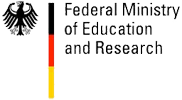| Foto | First Name | Last Name | Position |
|---|---|---|---|
 |
Marcus | Magnor | Graphics - Optics - Vision (Affiliated Independent Research Group) |
 |
Dominik | Michels | High Fidelity Algorithmics Group |
 |
Meinard | Müller | Multimedia Retrieval |
 |
Matthias | Niessner | Semantics and Geometry |
 |
Antti | Oulasvirta | Adaptive Multimodal User Interfaces |
 |
Sören | Pirk | Geometric Modelling |
 |
Erik | Reinhard | Color Image Processing |
 |
Tobias | Ritschel | Rendering and GPUs |
 |
Bodo | Rosenhahn | Marker-less Motion Capture |
 |
Bodo | Rosenhahn | Marker-less Motion Capture |
Researcher
 |
Dr. Michael Zollhöfer |
Visual Computing, Deep Learning and Optimization
| Name of Research Group: | Visual Computing, Deep Learning and Optimization |
| Homepage Research Group: | web.stanford.edu/~zollhoef |
| Personal Homepage: | zollhoefer.com |
| Mentor Saarbrücken: | Hans-Peter Seidel |
| Mentor Stanford: | Pat Hanrahan |
| Research Mission: | The primary focus of my research is to teach computers to reconstruct and analyze our world at frame rate based on visual input. The extracted knowledge is the foundation for a broad range of applications not only in visual effects, computer animation, autonomous driving and man-machine interaction, but is also essential in other related fields such as medicine and biomechanics. Especially, with the increasing popularity of virtual, augmented and mixed reality, there comes a rising demand for real-time low latency solutions to the underlying core problems. My research tackles these challenges based on novel mathematical models and algorithms that enable computers to first reconstruct and subsequently analyze our world. The main focus is on fast and robust algorithms that approach the underlying reconstruction and machine learning problems for static as well as dynamic scenes. To this end, I develop key technology to invert the image formation models of computer graphics based on data-parallel optimization and state-of-the-art deep learning techniques. The extraction of 3D and 4D information from visual data is highly challenging and under-constraint, since image formation convolves multiple physical dimensions into flat color measurements. 3D and 4D reconstruction at real-time rates poses additional challenges, since it involves the solution of unique challenges at the intersection of multiple important research fields, namely computer graphics, computer vision, machine learning, optimization, and high-performance computing. However, a solution to these problems provides strong cues for the extraction of higher-order semantic knowledge. It is incredibly important to solve the underlying core problems, since this will have high impact in multiple important research fields and provide key technological insights that have the potential to transform the visual computing industry. In summer 2019 Michael Zollhöfer joined Facebook. |
Researcher
- Name of Researcher
- Bodo Rosenhahn
- Homepage of Research Group
- First Name
- Bodo
- Last Name
- Rosenhahn
- Foto

- url_foto
- Homepage
- Phone
- Position
- Marker-less Motion Capture
- Mentor in Saarbruecken
- Mentor in Stanford
- Categories
- Former Groups
- Research Mission
- Motion capturing (MoCap) comprises techniques for recording and analyzing human movements in image sequences. In biomechanical settings, it is aimed at analyzing captured data to quantify the movement of body segments, e.g. for clinical studies, or to help athletes to understand and improve their performance. It has also grown increasingly important as source of motion data for computer animation. Well known and commercially available marker-based tracking systems exist, e.g. those provided by Motion Analysis, Vicon or Simi. The use of markers comes along with intrinsic problems, e.g. incorrect tracking of markers, tracking failures, the need for special laboratory environments and lighting conditions and the fact that people do not feel comfortable with markers attached to the body. This often leads to unnatural motion patterns. As well, marker-based systems are designed to track the motion of the markers themselves, and thus it must be assumed that the recorded motion of the markers is identical to the motion of the underlying human segments. Since human segments are not truly rigid this assumption may cause problems, especially in highly dynamic movements typically seen in sporting activities. For these reasons, marker-less tracking is an important field of research that requires knowledge in biomechanics, computer vision and computer graphics. The research group deals with different aspects regarding marker-less motion capture, e.g. pose estimation, image segmentation, surface modeling, surface morphing and texture driven tracking. Foundations and experiences of my PhD-Thesis and PostDoc in New Zealand are crucial for our ongoing research.
- mission_rtf
- Name of Research Group
Personal Info
- Photo

- Website, Blog or Social Media Link



